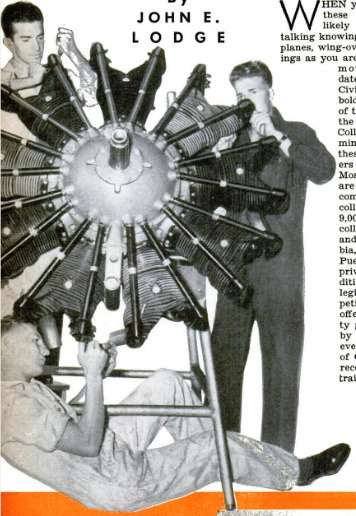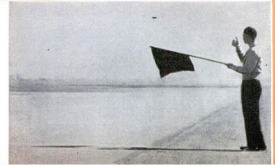-
Title (Dublin Core)
-
Flyers by the ten thousand
-
Article Title and/or Image Caption (Dublin Core)
-
Flyers by the ten thousand
-
extracted text (Extract Text)
-
WHEN you walk across a campus
these days, you are quite as
likely to hear undergraduates
talking knowingly about low-wing mono-
planes, wing-overs, and cross-wind land-
ings as you are to hear them discussing
mouse-trap plays, heavy
dates, or passing marks. The
Civil Aeronautics Authority's
bold and successful venture
of training youthful fiyers by
the thousands has made John
College and Jane Coed go air-
minded. Don't think that
these collegiate aviation talk-
ers are mere “hangar pilots.”
Most of them are flyers, or
are well on the way to be-
coming fiyers. During the
college year of 1839-40 about
9,000 of them, enrolled in 437
colleges located in every state
and in the District of Colum-
bia, Alaska, Hawaii, and
Puerto Rico, earned their
private-pilot licenses. In ad-
dition, well over 700 noncol-
legians, winners of com-
petitive flight scholarships
offered the students in seven-
ty ground courses sponsored
by civic organizations in
every state and in the District
of Columbia and Alaska, are
receiving exactly the same
training.
When this nation-wide training
effort was started last fall, its pri-
mary objective was to accelerate
the already swift progress of civil
aviation in the United States by
teaching large numbers of young
men and women to handle their
own airplanes safely in either
pleasure or utility flying. A second-
ary objective was the building up
of a reserve of physically sound,
partially trained pilots for possible
service in the Army or Navy in the
event of war.
The swift and menacing march
of world events in the past few
months has brought about a re-
versal in the degree of importance placed
on these objectives. Now most of the em-
phasis is on the national-defense aspect of
the program, which has been greatly ex-
panded. In the course of the coming year
the C.A.A. courses will give ground and
primary flying training of 45,000 students
in three intensive courses, each of which,
instead of being spread over the school year,
will be compressed into four months. In
addition, the 9,000 1940 graduates—over
ninety percent of them have indicated their
desire to become military fiyers—will be
given forty-five-hour advanced courses in
faster planes than those which are used for
the primary training.
The Civil Aeronautics Authority, the
Government agency charged with the regu-
lation of civilian aviation, has mo direct
connection with the armed services. The
graduates of its flying courses are not com-
bat flyers, and have no military obligations
which are not shared by nonflyers of the
same age. But the training they receive
is the equivalent of the flying training given
Army and Navy flying candidates, and it
will enable many of them to qualify as com-
bat flyers after six months of advanced
specialized training in service flying schools.
When the project of providing wholesale
flight instruction first was considered late
in 1038, an abnormally high percentage of
student-fiyer accidents was helping to make
private flying, with a safety rate of only
750,000 miles for each fatality, the most
hazardous form of aviation. But careful in-
vestigation indicated a method by which
‘mass production of pilots might be achieved
with a high degree of safety. It was found
that the students of flying schools which
had thorough ground courses and sound
flight courses suffered far fewer fatalities
than did the graduates of schools whose in-
struction standards were lower.
Placing heavy emphasis on safety, C.A.A.
experts worked out a ground course which
would teach students why and how
airplanes fly, and a flight course
which would enable instructors to
nip bad flying habits in the bud. In
the spring of 1939, with $100,000 of
National Youth Administration funds,
a test program was started in thir.
teen selected colleges. Undergradu-
ates enthusiastically grabbed at the
chance to learn to fly—so enthusi-
astically that at the University of Alabama
there were 1,200 applicants for the thirty
places in the class. A total of 330 students
with high physical qualifications were ac-
cepted at the thirteen participating colleges.
All of them reached the solo stage and 317
won private-pilot licenses. Their average
flying time to the certificated stage was
thirty-eight hours, and they flew a total of
1,200,000 miles with only a single fatality.
Convinced by this ex-
perience that the way
to increase the safety
of flight instruction was
to raise the quality of
the instruction, the
C.A.A. standardized its
ground and flying
courses and required all
airmen holding flight-
instructor ratings to
familiarize themselves
with the improved instruction methods and
to pass an examination to prove that they
had done so. More than 4,000 instructors
passed the test, assuring the Authority of
plenty of highly-qualified teachers for its
training program.
Congress passed a Civilian Pilot Training
Act and provided $4,000,000 for the 1939-40
courses. Undergraduate interest was so
keen that colleges ranging from stately ivy-
covered institutions to little city and junior
colleges offered the pilot-training courses.
When school opened last September, over
9,300 undergraduates who had passed the
searching physical examinations given by
C.A.A. flight surgeons were accepted as
students. By June they had logged 310,000
dual and solo flying hours—almost 22,000,-
000 miles—with very few mishaps and only
one fatality. That remarkable record is animprovement
of 3,700 percent over thesafety record for flight training for the
whole country only a year ago!
‘Under the terms of the Civilian
Pilot Training Act at least five
percent of those enrolled for the
courses must be noncollege stu-
dents. To provide instruction
for these, the C.A.A. enlisted
the cobperation of chambers of
commerce, university-extension
services, American Legion posts, aeronauti-
cal associations, and civic clubs in com-
‘munities of every state. The ground courses,
which are exactly the same as those offered
in the colleges, are open to anyone, but, to
be eligible for one of the ten flight scholar-
ships offered with each course, the student
must pass the same physical examination
given the col-
most deadly enemy of good flying. They
are alert for indications that the student is
“choking the stick’ getting a drowning
man’s clutch on the control. This prevents
the development of the delicate “feel” by
which good pilots fly.
During early dual flights the instructor, in
the front seat, demonstrates simple maneu-
vers and the student follows his movements
on the dual controls. Then the student is al-
lowed to fly the plane except when taking
off and landing, with the instructor ready to
take over if he makes a serious mistake.
In the later lessons of the dual-instruction
stage the instructor demonstrates spins and
simulated forced landings, and the student is
permitted to make into-wind take-offs, and
into-wind landings without power.
As soon after the minimum eight hours
of dual instruction as the teacher thinks he
is competent, the student makes his first
solo flight. He devotes at least six half-
hour periods, with as much dual check in-
struction as his instructor thinks desirable,
to practicing level flight, turns, glides, and
other elementary maneuvers. Then he goes
on to advanced solo flight and devotes fif-
teen hours in the air, checked by eight hours
of dual instruction, to precision landings,
stalls and spins, power turns, cross-wind
take-offs and landings with power, and oth-
er advanced maneuvers, leading up to a
fifty-mile cross-country solo flight over a
triangular course, and finally to the exami-
nation for his private-pilot license.
The Civil Aeronautics Authority's pilot-
training program has been sensationally
successful in training a large number of
pilots with a hitherto unknown degree of
safety. It is expected that during this com-
ing year at least 600 colleges will offer
C.A.A. courses to their undergraduates, and
that there will be a proportionate increase
in the number of noncollege courses. Many
of this spring's graduates intend to enter
Army or Navy flying schools after they
have completed their advanced courses this
summer.
Already the program has helped material-
ly to increase the number of licensed pilots
in the United States from 33,000 to 45,000
in less than a year. Aviation experts are
confident that the expanded program will
provide 1 large number of well-grounded
candidates for commissions in our naval
and military air services, and that many of
its graduates will become pilots of the new
fighting planes on which some day the safe-
tv of America may depend.
-
Contributor (Dublin Core)
-
John E. Lodge (article writer)
-
Language (Dublin Core)
-
eng
-
Date Issued (Dublin Core)
-
1940-09
-
pages (Bibliographic Ontology)
-
46-51, 219
-
Rights (Dublin Core)
-
Public domain
-
Archived by (Dublin Core)
-
Sami Akbiyik
-
Marco Bortolami (editor)
 Popular Science Monthly, v. 137, n. 3, 1940
Popular Science Monthly, v. 137, n. 3, 1940
 Ekran Resmi 2022-01-31 13.54.57.png
Ekran Resmi 2022-01-31 13.54.57.png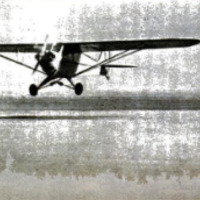 Ekran Resmi 2022-01-31 13.55.08.png
Ekran Resmi 2022-01-31 13.55.08.png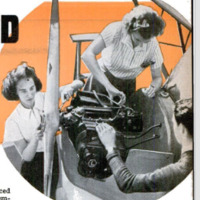 Ekran Resmi 2022-01-31 13.56.04.png
Ekran Resmi 2022-01-31 13.56.04.png Ekran Resmi 2022-01-31 13.56.16.png
Ekran Resmi 2022-01-31 13.56.16.png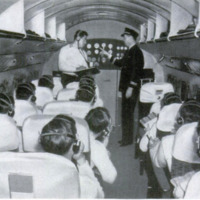 Ekran Resmi 2022-01-31 13.56.21.png
Ekran Resmi 2022-01-31 13.56.21.png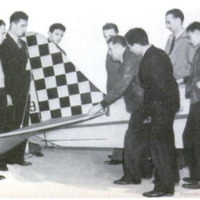 Ekran Resmi 2022-01-31 13.56.26.png
Ekran Resmi 2022-01-31 13.56.26.png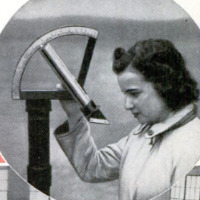 Ekran Resmi 2022-01-31 13.56.34.png
Ekran Resmi 2022-01-31 13.56.34.png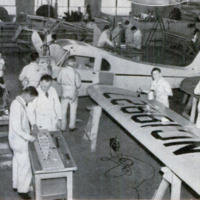 Ekran Resmi 2022-01-31 13.56.43.png
Ekran Resmi 2022-01-31 13.56.43.png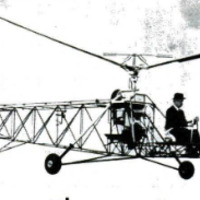 Ekran Resmi 2022-01-31 13.56.50.png
Ekran Resmi 2022-01-31 13.56.50.png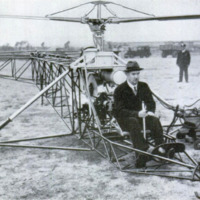 Ekran Resmi 2022-01-31 13.56.55.png
Ekran Resmi 2022-01-31 13.56.55.png
